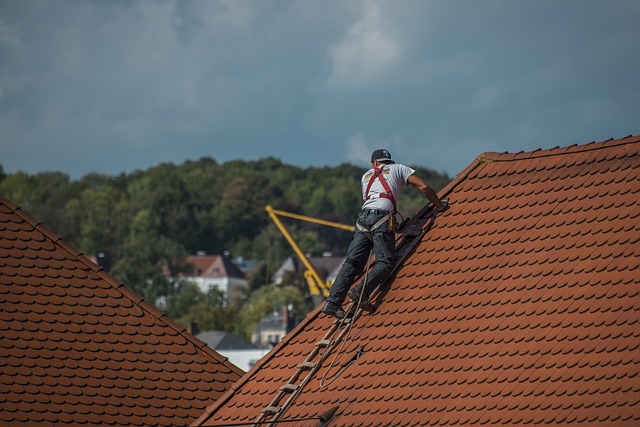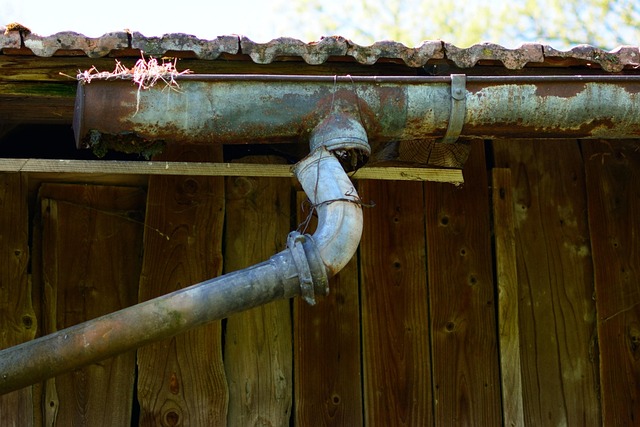Roof ventilation is crucial for maintaining indoor air quality, preventing structural damage, and safeguarding homes in humid Houston from moisture-related issues. Common problems like blocked vents and inadequate venting areas lead to mold growth, wood rot, and other severe damages. Promptly seeking expert roof repair Houston services is vital for early identification and resolution of these issues, ensuring the longevity of roofing systems. Regular maintenance, including inspections and repairs, is key to preventing costly water damage and extending roof lifespans in Houston's challenging climate.
In Houston’s humid climate, proper roof ventilation is crucial for preventing moisture buildup. Understanding the importance of ventilation and addressing common issues can save you from costly roof repairs. This guide covers everything from identifying signs of moisture on your roof to a step-by-step fix for ventilation problems, ensuring your home stays protected against water damage. Learn expert tips for maintaining an efficient ventilation system to extend the life of your Houston roof.
- Understanding Roof Ventilation and Common Issues in Houston
- Identifying Signs of Moisture Buildup on Your Roof
- The Role of Proper Ventilation in Preventing Water Damage
- Step-by-Step Guide to Fixing Roof Ventilation Problems
- Maintenance Tips for Long-Lasting Roof Ventilation Systems
Understanding Roof Ventilation and Common Issues in Houston

Roof ventilation is a critical component of any roofing system, particularly in regions like Houston with its unique climate and weather patterns. The primary function is to regulate indoor air quality by allowing fresh air to circulate while expelling moist, stagnant air from the attic space. This is essential for preventing moisture buildup, which can lead to a host of issues such as mold growth, wood rot, and structural damage over time. Houston’s humid summers and occasional heavy rainfall underscore the importance of proper roof ventilation to maintain a dry and comfortable indoor environment.
Common problems that arise from inadequate roof ventilation in Houston include blocked vents due to debris accumulation, insufficient venting areas leading to positive pressure in attics, and improper flashing around vents. These issues can be exacerbated by the city’s dense urban landscape, where tall buildings and limited outdoor space often result in more challenging ventilation configurations. Addressing these problems promptly through expert roof repair Houston services is crucial to safeguard homes and properties from the detrimental effects of moisture buildup.
Identifying Signs of Moisture Buildup on Your Roof

If you suspect a moisture issue on your Houston roof, it’s crucial to identify signs early on. Keep an eye out for discolored or blistered shingles, which could indicate leaks or water damage. These spots may appear as dark stains or patches where the material is warped or bubbling. Over time, standing water can cause wood beams and trusses to rot, compromising the structural integrity of your roof.
Moisture buildup might also manifest as mold or mildew growth on exterior surfaces. You may notice a musty odor coming from the attic or ceiling areas. Additionally, look for signs of peeling paint or warped drywall, as these can be indicators of persistent moisture problems that require immediate roof repair Houston professionals can address to prevent further damage.
The Role of Proper Ventilation in Preventing Water Damage

Proper ventilation plays a pivotal role in preventing moisture-related damage to roofs, a common issue in many households, especially in humid climates like Houston’s. When a roof is well-ventilated, it allows for the effective circulation of air, which helps regulate temperature and reduce humidity levels. This is crucial as excess moisture can lead to significant problems such as mold growth, wood rot, and even structural damage over time. By promoting air flow, ventilation ensures that any condensation that may form on the roof surface evaporates quickly, preventing water from pooling and seeping into the attic or ceiling areas below.
In the context of Houston’s roof repair services, addressing ventilation issues is an essential step in safeguarding homes against costly water damage repairs. Skilled technicians understand the unique challenges posed by the region’s climate and can implement tailored solutions to ensure optimal roof ventilation. This may involve installing or upgrading vents, improving exhaust systems, or using specialized materials that aid in moisture control. Regular maintenance and inspection can also help identify potential problems early on, making it easier to fix roof ventilation issues before they escalate into major structural concerns.
Step-by-Step Guide to Fixing Roof Ventilation Problems

Roof ventilation issues can lead to serious problems, including moisture buildup and even structural damage. If you’re dealing with a leaky or poorly ventilated roof in Houston, taking care of it promptly is crucial. Here’s a step-by-step guide to help you fix these issues.
First, inspect your roof for any blockages in the ventilation system, such as debris, leaves, or bird nests. Clear these obstructions using a ladder and a broom. Next, check the condition of your vents. Replace any damaged or missing vent covers. Ensure that all vents are properly sealed to prevent water intrusion. If you have ridge vents, verify they’re functioning correctly and not blocked by shingles or debris. Lastly, consider adding additional ventilation if necessary, especially in areas prone to high humidity or temperature fluctuations. Regular maintenance and timely repairs can significantly extend your roof’s lifespan in the Houston climate.
Maintenance Tips for Long-Lasting Roof Ventilation Systems

Regular maintenance is key to ensuring your roof ventilation system remains effective and long-lasting, especially in Houston’s humid climate where moisture buildup can be a significant issue. Here are some essential tips for keeping your roof ventilation in top condition:
Inspect your ventilation system at least twice a year, focusing on the gutters, vents, and fans. Look for any signs of damage, debris buildup, or blockages. Cleaning and repairing these components promptly will prevent clogs that could lead to moisture infiltration. A well-maintained system ensures optimal airflow, keeping your roof dry and reducing the risk of costly roof repair Houston residents might otherwise face due to water damage.
Addressing roof ventilation issues is a crucial step in protecting your home from moisture-related damage, a prevalent concern in Houston’s unique climate. By understanding common problems and implementing effective solutions, you can ensure a well-ventilated roof, preventing water buildup and prolonging the lifespan of your roofing system. Whether through professional repair services or DIY maintenance, taking care of ventilation is an investment in your home’s health and value. Remember, a well-ventilated roof is key to keeping your Houston home dry and protected for years to come, making it a vital aspect of any comprehensive roof repair Houston residents should consider.
